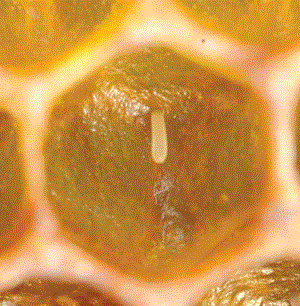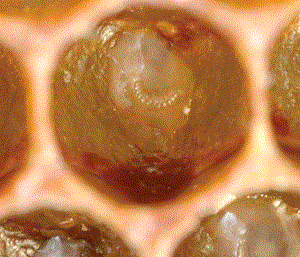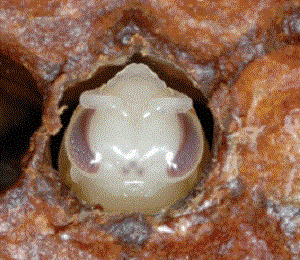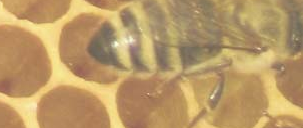
Life of the honeybee
Honeybees have four stages in their life cycle:
- egg,
- larva,
- pupa, and
- winged adult.
Wild honeybees build a hive out of wax secretions from their
bodies; domesticated bees do this inside a a wooden hive. The queens
lay their eggs in cells in the wax cells.
The Queen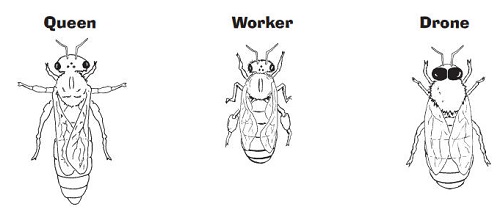
The queen bee is the largest of the honey bees. She has a longer abdomen, a shiny thorax, and does not have pollen baskets on her legs. The queen has a stinger, which she uses to fight off other queens. She may sting multiple times without dying. Worker bees are the smallest of honey bees. They have long proboscises used to suck up nectar from flowers.
Worker bees
Worker bees’ hind legs are fringed with stiff hairs that form pollen baskets. Workers have a stinger and a poison gland at the tip of their abdomen. Typically, worker bees can only sting once because their stingers and internal organs are pulled out when they sting and they die. For the first three weeks of her adult life, a worker bee performs chores inside the hive. Known as house bees to beekeepers, these young adults clean the hive, feed larvae, build wax cells, and make honey. Each bee, guided by an inner clock, does certain chores as she reaches a certain age. For the second half of the worker bee’s life, she works outside. If the air is hot, her first task is to ventilate the hive by fanning her wings just outside the nest. (A honey bee’s wings flap over 183 times per second!) The worker’s next job is to stand guard outside the hive. Bees can recognize their hive mates by scent and will attack unfamiliar bees and other insects. When a worker bee defends her colony against and stings an enemy, she gives off an alarm pheromone from a gland near her stinger to alert other bees. The last role of the worker bee is that of forager, flying through fields, gardens, and orchards gathering food and supplies. The field worker bee makes about ten trips a day, each one lasting about an hour. She leaves the hive at sunrise and returns from her last flight at sunset. During these travels, the worker gathers not only nectar and pollen, but also water and propolis (bee glue).
Drones
Drones, the male members of the colony, are somewhat larger than the workers. They have rounded abdomens, huge compound eyes, and powerful wings. Drones do not have long proboscises and must be fed by worker bees. They also do not have stingers and therefore cannot defend themselves. Drones do not have wax secreting glands. The drones only purpose is to mate with the queen. Mating takes place in the air.
Lifecycle
Left to right: egg, larva, pupa
